
Casablanca to Tangier
Al Boraq, the High-Speed Train from Casablanca to Tangier
I had arrived in Casablanca and spent two nights there,
seeing the Art Deco architecture and the huge
Hassan II Mosque.
Now I was traveling on to Tangier.
Morocco has a great train system,
and I would buy my tickets as I went.
Today's leg of the journey would be on a great high-speed train.
First, though, breakfast at my hotel.
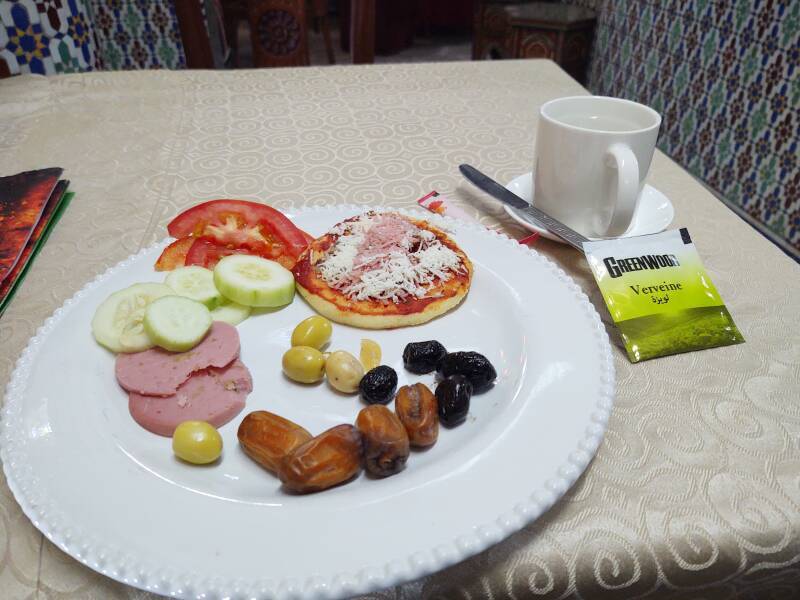
It was two blocks from my hotel to the Casablanca Tramway line, and then one long block to a platform.
You buy your ticket from a machine. It was just 8 Dirham — 2 Dirham for a new paper smart card and 6 Dirham per ride.
Here comes the tram!
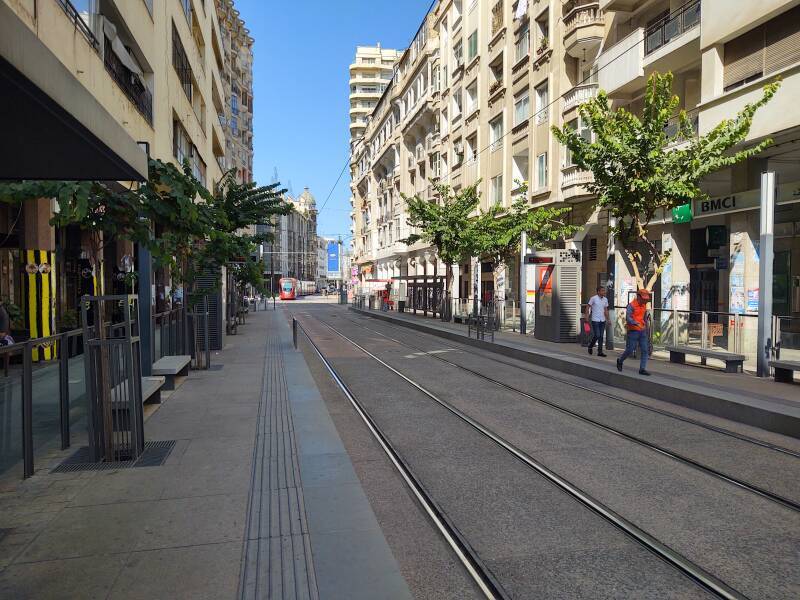
Construction on the first tramway line started in 2010, and it began operation in 2012. Two lines were operating when I was there in late 2022, and two more were to open soon.
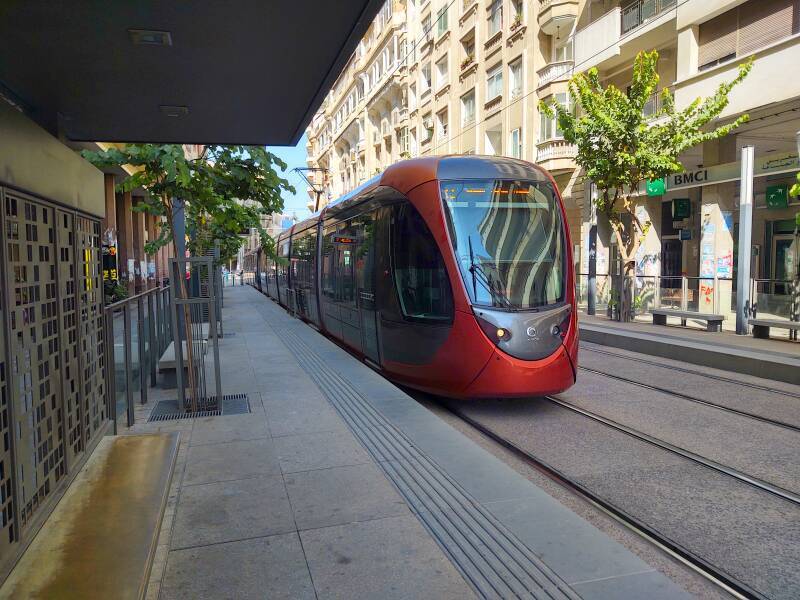
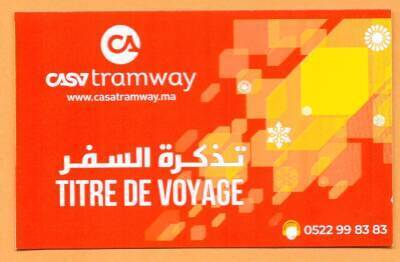
The tramway uses Alstom Citadis low-floor trams. Tramways using these are in operation on all six inhabited continents. There are none at all in the U.S., of course, where the public transportation uses half-century-old technology. And, in Chicago, it stinks of weed and pee.
The CTA Blue Line in Chicago functions as a rolling homeless colony. It's not just outdated hardware, it's transporting a failed society. When a Blue Line train arrives at O'Hare International Airport, there are staff on hand in elbow-length rubber gloves, rubber galoshes, and face masks ready to mop vomit and diarrhea out of the train. I don't live in Chicago, but I've seen the Bodily Fluid Squad in action multiple times.
That isn't needed in Morocco.
I was on my way to Tangier, where William S Burroughs wrote Naked Lunch. Imagine how much more shocking it could have been if he had instead written it in Chicago!
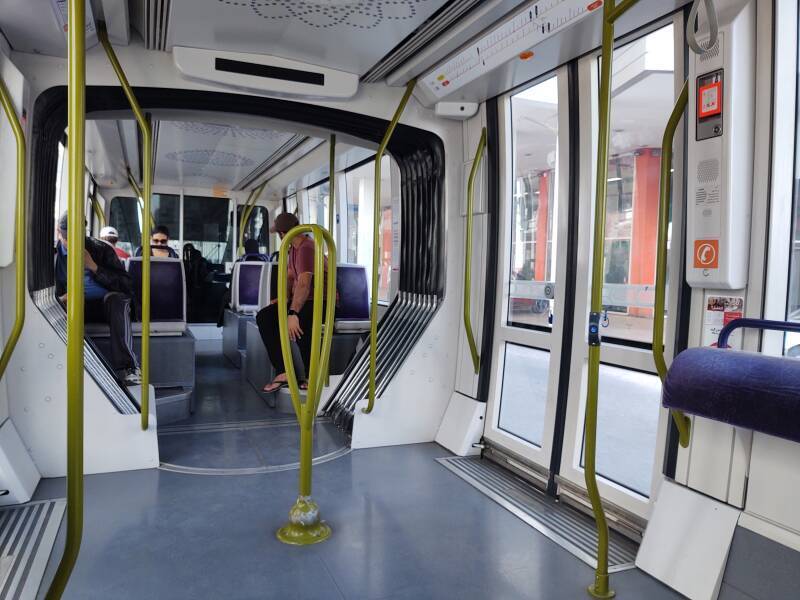
Gare Casa Voyageurs
Three stops took me to Gare Casa Voyageurs. Everyone calls Casablanca "Casa", and this is the gare for the voyageurs, the long-distance travelers. I had started this trip crossing the Wabash River from West Lafayette to Lafayette, where many French voyageurs had traveled through during the 18th century.
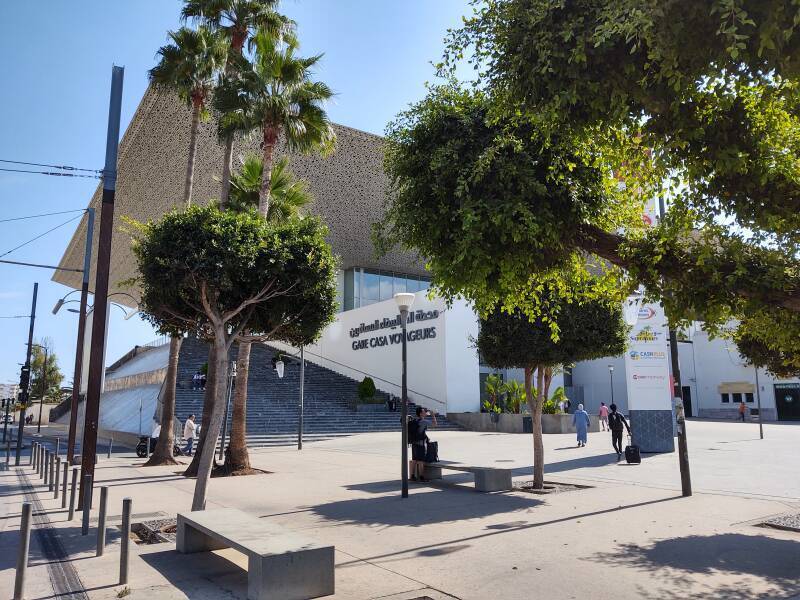
The old station still stands beside the new one.
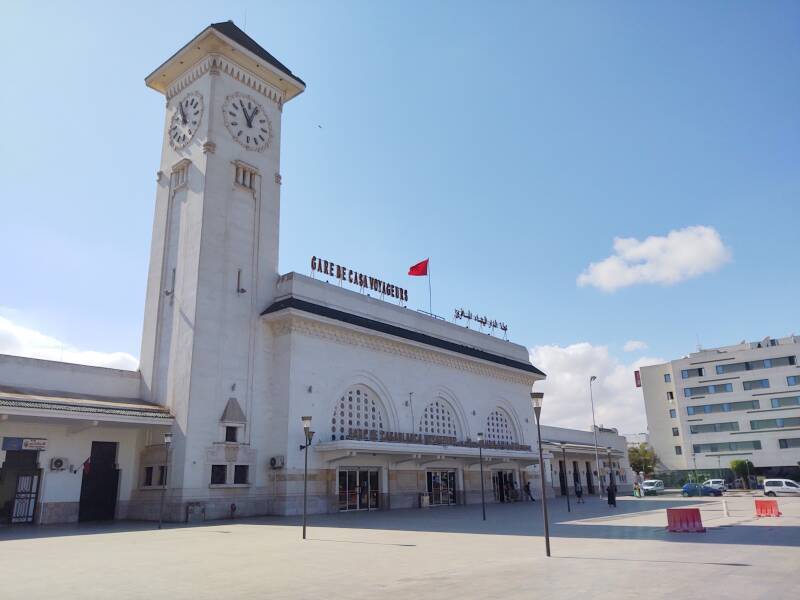
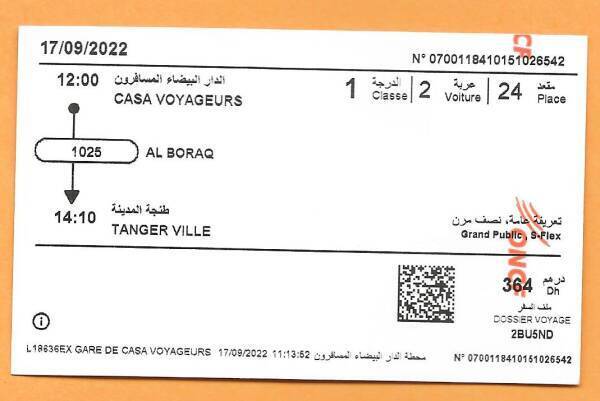
I had soon purchased my ticket and went out on the balcony. 364 Dirham or US$ 33.86 for my first-class seat on the modern train.
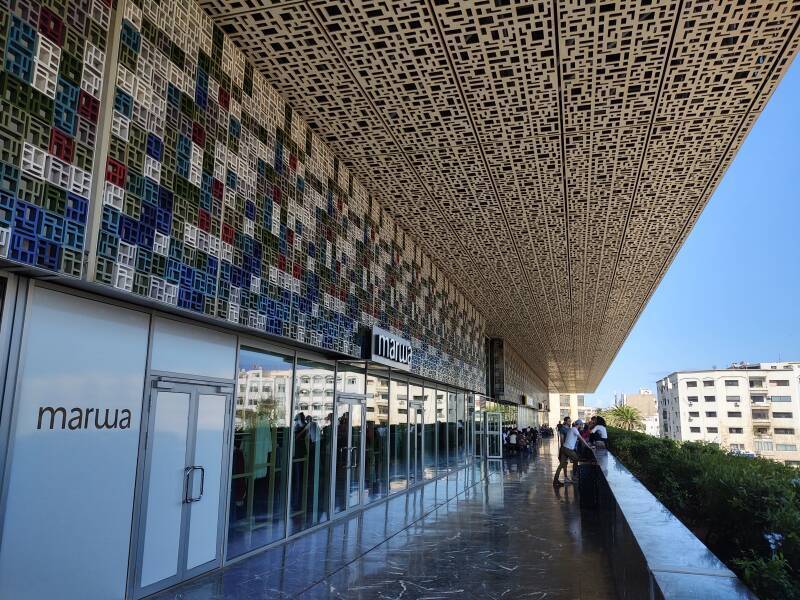
There are ten platforms here. The Moroccan rail system is run by ONCF, Organization Nationale des Chemins de Fer.

The al Boraq, the 323-kilometer high-speed service between Casablanca and Tangier, started operation in November 2018. Construction had started in September 2011, after the project was first proposed in 2006. For the 137 kilometers from here to Kénitra we will be on a line that was upgraded for use by the al Boraq. It's rated for speeds of 220 kilometers per hour and the train uses the existing 3 kV DC catenary.
For the 186 kilometers from Kénitra to Tangier we will be on a specially built line with 25 kV 50 Hz AC power, with a top speed of 320 kilometers per hour. That makes for just two hours and ten minutes from Casablanca to Tangier including the stops at Kénitra and Rabat. Similar 320-kph track was being built for the Casablanca-Kénitra segment while I was there, as well as lines to Marrakech and other destinations.
The train just to the right of the viewpoint in the below picture is mine. We're looking north, the direction it will go.
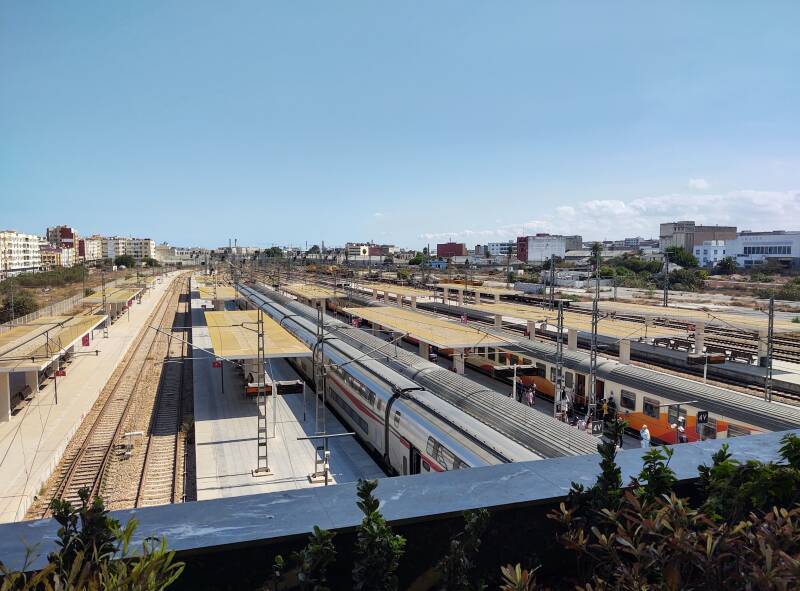
Meanwhile, Amtrak's Acela, the fastest train in the U.S., can reach a top speed of 240 kph on only 55 kilometers out of the entire 735 km East Coast route between Boston and Washington DC. When I was visiting Morocco in 2022, Amtrak was hoping to increase Acela speed to 260 kph "on some portions of the route".
PHP does the math:
<?php echo(date("Y")-1983); ?>
As for the train I took between Lafayette and Chicago, it can hit a peak speed of 100 kph in isolated stretches. It uses Amfleet II coach cars built in 1980–1983, so all are at least 42 years old. The locomotives could pull the train faster, but it would shake everyone's teeth loose shortly before the train went flying off the rough CSX freight tracks it runs on. The 174 kilometers between Lafayette and Chicago is scheduled for two hours and forty-five minutes, an overall net speed of 63 kph. That's when it keeps to its schedule, which it frequently can't because of interference from freight trains.
I went in to check the schedule. The high-speed al Boraq runs every hour through the day in each direction. It was 11:35, my train was the second departure in the list, at 12:00.
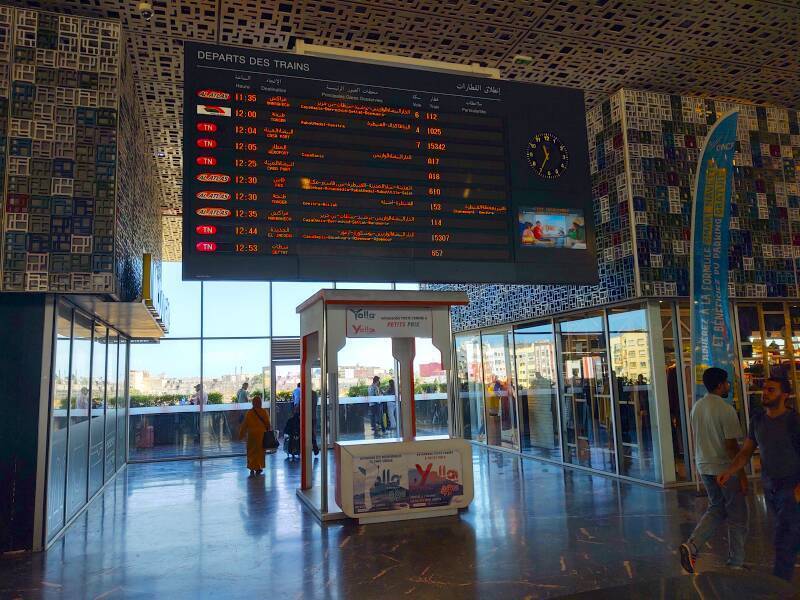
Al Boraq
They started the boarding process about twenty minutes before departure. Down the escalator and onto the train!
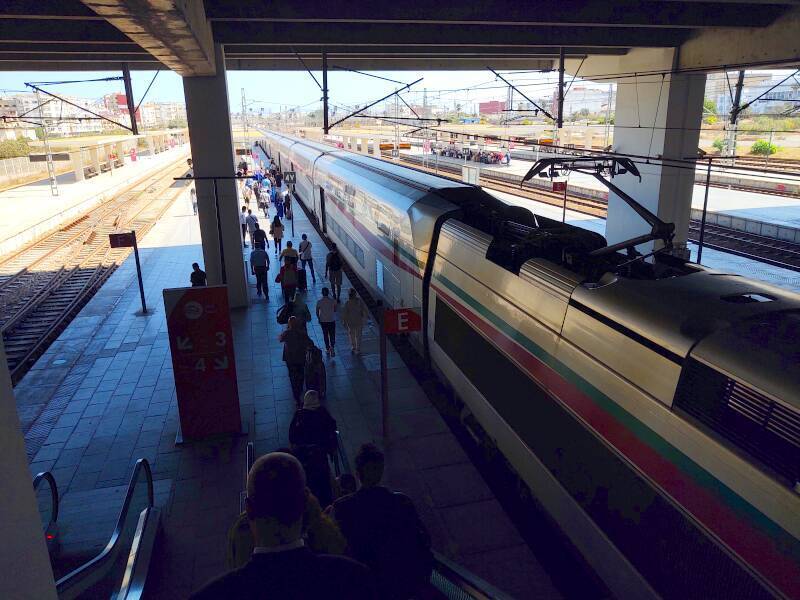
Al Boraq or "The Lightning" references Islamic tradition's heavenly chimeral beast who carried Muhammad on his Night Journey from Mecca to Jerusalem and on to heaven, and then back again. And, also, some other prophets such as Abraham on their own rapid to instantaneous journeys.
These are Euroduplex trains made by Alstom. That's the same company that makes the nice trams. SNCF, the French railway system, buys the same equipment.
Each train has a power car at each end, two first-class cars, a café car, and five second-class cars. The passenger cars have two levels.
This is a first-class car, with 1×2 seating. I was following the excellent advice of The Man in Seat 61 and had purchased a first-class ticket. It was just 364 Dirham. Second class with 2×2 seating would have been 224 Dirham.
I had an aisle seat on the two-seat side, so no en-route pictures on this ride. For those, see the later page with my Tangier to Meknès rail journey.
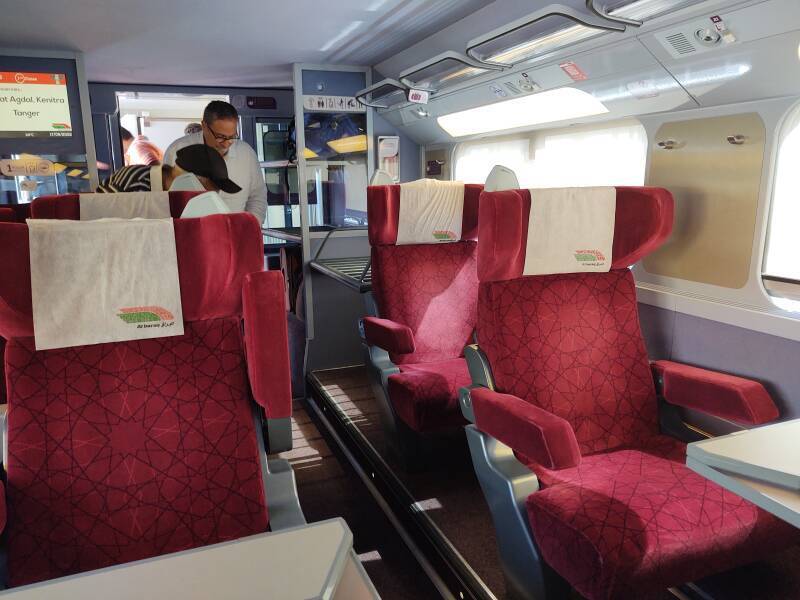
Arrival at Tangier Ville
The town and thus the station is spelled Tanger in French, their representation of the Arabic name. However, English speakers, or at least Americans, would assume that that should rhyme with "hanger".
Just over two comfortable hours later we arrived at Tangier Ville station!
It was such a pleasant ride that I was not anxious to get off. When they finish upgrading the Casablanca-Kénitra segment to 320-kph service, it will be an even shorter ride.
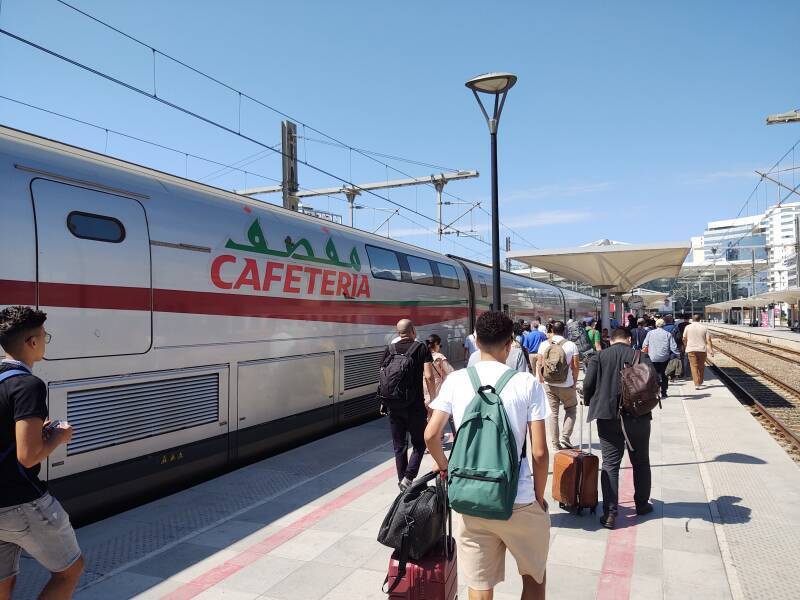
Tangier hosts the service facility for the al Boraq equipment, so you'll likely see multiple trains in the station.
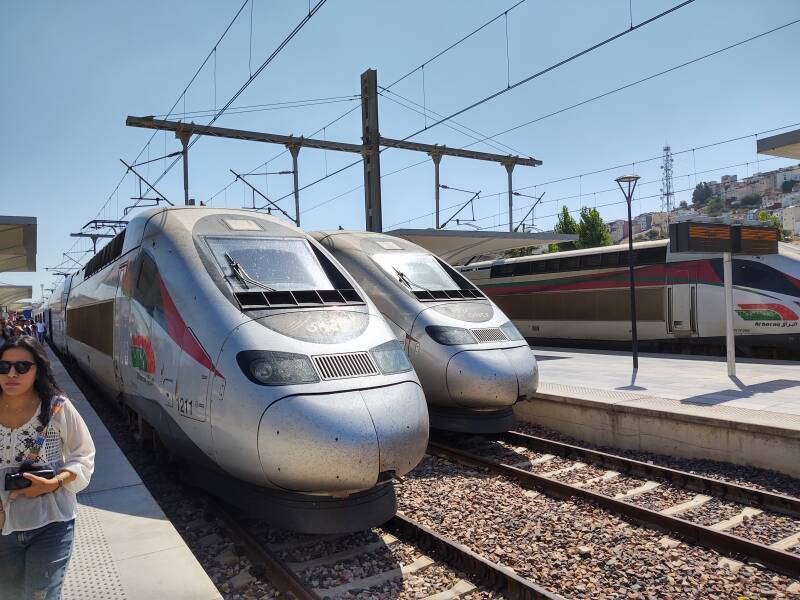
I planned to take the overnight Tangier–Marrakech sleeper train later in the trip. That's the one train for which you can't buy your ticket on line in advance at oncf-voyages.ma.
So, to ensure that I had a couchette reserved, I bought that and my Tangier–Meknès ticket while I was in the Tangier Ville station. This was very easy, the staff was friendly and helpful and even my rough French got me through the purchase with no problems. I'm sure they had someone who knew some English. And, given that this was Tangier, Spanish.
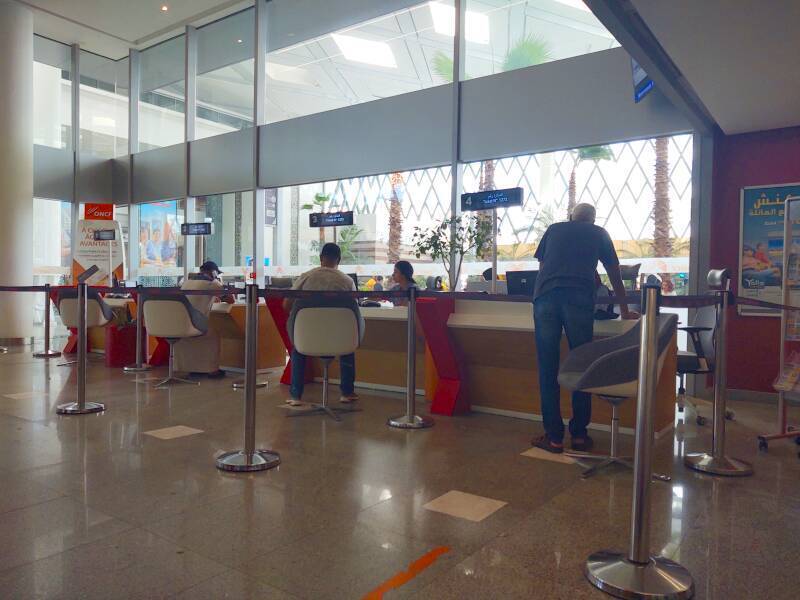
Tangier Ville was freshly built or rebuilt for the al Boraq service. I was seeing that it wasn't just Casablanca, Morocco has grand plazas everywhere.
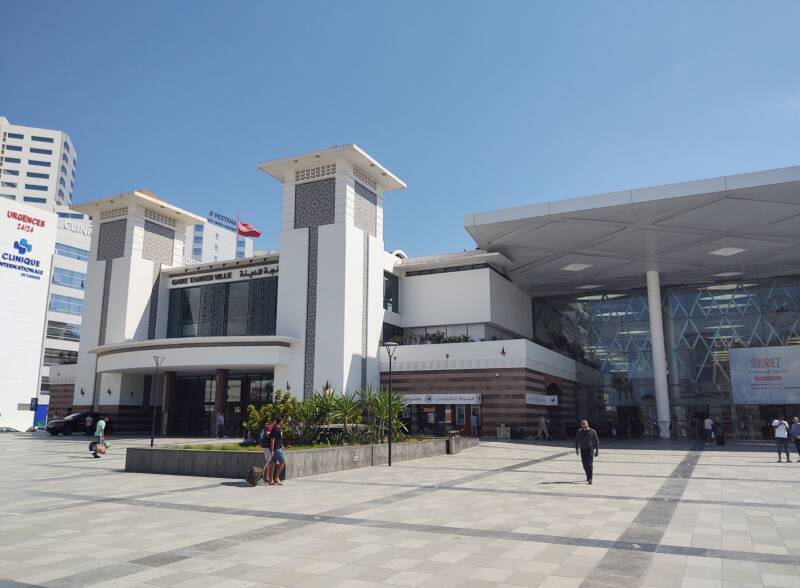
And, wow, this wasn't what I expected. A towering Hilton hotel, a multi-story shopping center, and other glittering new buildings. This is the ville nouvelle.
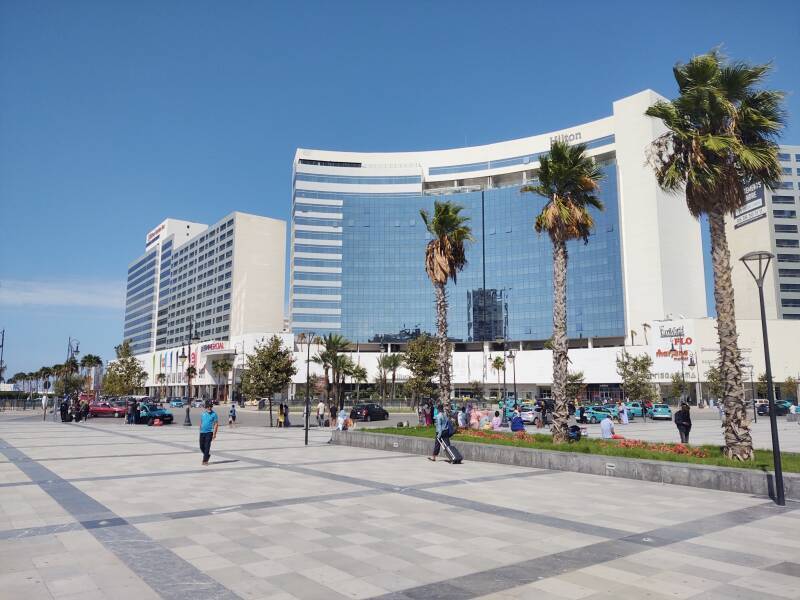
Well, that's great for Morocco. But I'm here to see the medina, the old city! I will take a turquoise petit taxi to the Grand Socco and enter the medina on foot.
One thing I wouldn't have is tangerines, I imagined that I would be eating lots of tangerines in Tangier because that's where that fruit hybird was developed. There used to be tangerine orchards south of the medina, between it and today's location of Tangier Ville station. But by 1900 the local demand already exceeded the supply. By then the large-scale tangerine production was based in Florida.
But other than the tangerines, everything in Tangier was great. See the next page for my journey to where I would stay.
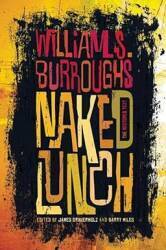

At the time:
1 Dirham = 0.093 US$
10.75 Dirham = 1 US$
or, close enough:
10 Dirham ≈ 1 US$